Introduction The issue of religious freedom has played a significant role in the history of the United States and the remainder of North America. Europeans came to America to escape religious oppression and forced beliefs by such state-affiliated Christian churches as the Roman Catholic Church and the Church of England. That civil unrest fueled the desire of America’s forefathers to establish the organization of a country in which the separation of church and state, and the freedom to practice one’s faith without fear of persecution, was guaranteed. That guarantee was enshrined in the First Amendment to the Constitution (text) as, “Congress shall make no law respecting an establishment of religion, or prohibiting the free exercise thereof...”
The splintering of Christianity resulted in more than 900 denominations of that faith currently existing in the United States, of which the vast majority of Americans are members. The U.S. was the first western nation to be founded predominately by Protestants — not Roman Catholics. That fact alone expresses America’s willingness to experiment with the novel and a defiance of tradition. Its history includes the emergence of Utopian Experiments, religious fanaticism, and opening the door to such exotic religions as Buddhism, Hinduism, Islam, and Taoism. Such has been the winding road of religious evolution in America.
The role of religion among American Indians For untold generations before Europeans came to America, native peoples celebrated the bounty given to them by the Great Spirit. Across America, such Indian tribes as The Algonquians, The Iroquois, Sioux, and the Seminoles worshiped the Great Spirit, who could be found in animals as well as inanimate objects. Elaborate rituals and such dances as the Sundance, Round, Snake, Crow, Ghost and others were developed and led by such native leaders as Wodiziwob, Wovoka , Black Elk, Big Foot, Sitting Bull , and others. As white colonists drove Indians onto reservations, the fervency of their religious practices increased, even as Christian missionaries made inroads that influenced their spirituality.
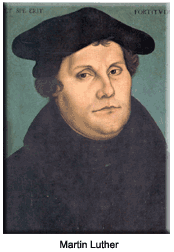 Colonial religious splintering
Colonial religious splintering
Religious persecution and iron-fisted rule by state-affiliated Christianity in Europe began to loosen its hold in the 16th century when, for the sake of debate, Martin Luther nailed his 95 theses on the door of the Castle Church in Wittenburg, Germany.
King Henry VIII founded the Church of England, owing to disagreements regarding papal authority. In later attempts to free themselves from the tie of the state governmental system imposed by the Church of England (Anglican Church), such denominations as the Reformed-Presbyterian churches and the European Free Church were formed.
Those religious parents gave birth to the next wave of Christian denominations. Reforms were brought by the Puritans to the American colonies. Such calls to “purify” the Anglican Church led to the birthing of the Baptists and Congregationalists in America. As later cries for reform and renewal took place, further splintering occurred among the Methodists, Pentecostals, Fundamentalists and Adventists, each bearing a diminished resemblance to their original parents.
Evangelical movement roots and branches
Evangelism has played an integral part in the history of religion in America, from colonial times to the present, while its methods of dissemination have changed dramatically. Spreading the “Good News” during colonial times was accomplished through books printed by the Puritans on the press brought to Boston in 1638, or carried across the Atlantic on ships loaded with colonists. During the Great Awakening of the 1740s, white Protestant evangelists proselytized to black Americans. The Methodists were most successful, owing to their belief in a “near” rather than “distant” god, self help, liberation of sin through conversion, and their lively preaching and singing methods of worship during evangelical revivals. During the 19th century, Methodists held camp meetings in the frontier states.
Evangelism turned to elaborate crusades in the 20th century when such preachers as Billy Sunday attempted to convince nonbelievers that they should "jump ship" from their ancestral Christian denominations. Tent revivals, broadcast by radio and television, were dynamic with charismatic preachers who captured the attention of millions of people.
"Televangelists" of the 1950s through the late 1980s brought a personality-based form of worship to the small screen, until scandals involving Jim Bakker, Jimmy Swaggart, Pat Robertson and Oral Roberts, provoked widespread distrust of them. While they were relegated to cable TV networks, evangelistic websites slowly began to crop up on the Internet during the early 1990s. Because of the anonymous nature of that interactive communication tool, people felt more comfortable sharing their personal beliefs and faith over the Internet with a large audience, or with one unknown person. Media evangelists incorporated multimedia presentations with sound, the written word, movies and video technologies.
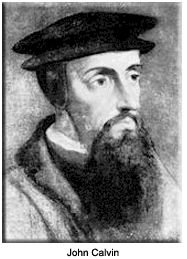
Major Protestant denominations in the colonies Although they crossed the Atlantic to be free of a state-sponsored religion, settlers' everyday lives were extensively shaped by their religious beliefs and practices. The First Amendment to the Constitution (narrative), which is called the “Establishment Clause,” states, “Congress shall make no law respecting the establishment of religion, or prohibiting the free exercise thereof.” Also, the relationship between religion and politics was established in Article VI of the First Amendment that states, “No religious test shall ever be required as a qualification to any office or public trust under the United States.” The definition of the separation of church and state found in the U.S. Constitution has caused more disagreement than any other in the nation’s history. To prevent a return to a centralized, overbearing government, the Bill of Rights was added to the Constitution, without which ratification by Virginia and New York would not have occurred.
To fully understand the impact of the spread of Christian denominations in America, it is important to look at them and their origins individually. Listed below is a brief summary of those denominations, beginning with a proto-denomination, The Puritans.
Puritans The Puritans came to the New England colonies to escape religious persecution. The Puritans later gave birth to the Baptists and the Congregationalists. Led by John Winthrop, 900 Puritan colonists landed in Massachusetts Bay. Managing to endure the hardships of pioneer life and accustomed to caring for each other’s needs, they prospered, and their numbers grew from 17,800 in 1640 to 106,000 in 1700. Their attempt to “purify” the Church of England and their own lives was based on the teachings of John Calvin. Using the New Testament as their model, they believed that each congregation and each person individually was responsible to God. Their belief that their destiny was predetermined, their self-imposed isolation, and religious exclusivity, would later lead to witch hunts beginning in 1688. The expulsion of Roger Williams in 1636 and Anne Hutchinson in 1638 was caused by their neighbors' fear of "evil" in their midst. The Puritans also were responsible for the first free schooling in America and established the first American college, Harvard College, in Cambridge, Massachusetts.
Congregationalists Based on the Calvinist (Reformed) tradition and strictly opposed to external authorities, Congregationalists came to New England and established the Plymouth Colony in 1620. As part of the Separatist movement, Congregationalists broke from the Anglican Church and established independent congregations in which God was the absolute authority. Prone to splintering, those congregations experienced a great number of local schisms during the first Great Awakening in the 1740s. During the 1800s, membership declined as their Methodist and Baptist cousins continued to gain strength. Unitarianism developed as an offshoot of COngregationalism, initially due to disagreement over the reality of the Trinity. Over the years, their resistance to dependence and external secular and clerical authority has lessened. Many Congregationalist churches have subsequently merged with other churches from the Reformed tradition. Today their membership in the U.S. is slightly more than 120,000 members.
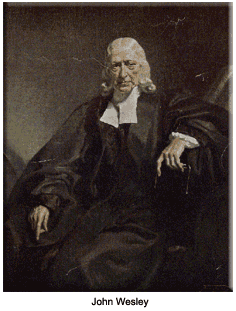 Methodists The tap root of Methodism was a group of Oxford University students, amongst whom were its founders, John and Charles Wesley. Begun within the Anglican Church, Methodists were not fleeing religious persecution from the Church of England when they came to the Mid-Atlantic colonies in the 1730s and ‘40s. When Francis Asbury arrived in 1771, Methodism comprised 1,160 members served by 10 preachers in Maryland, New Jersey, New York, Pennsylvania, and Virginia. Asbury promoted circuit riding and thus increased American Methodism to 214,000 by the time of his death in 1816. Together with Philip William Otterbein, Reformed Church pastor; Methodist preacher Jacob Albright, and Martin Boehm, Asbury created the Methodist Episcopal Church in 1784, and became one of its first bishops. One of the more liberal Christian denominations, the United Methodist Church has become the second-largest Protestant denomination in America with 8.6 million members.
Methodists The tap root of Methodism was a group of Oxford University students, amongst whom were its founders, John and Charles Wesley. Begun within the Anglican Church, Methodists were not fleeing religious persecution from the Church of England when they came to the Mid-Atlantic colonies in the 1730s and ‘40s. When Francis Asbury arrived in 1771, Methodism comprised 1,160 members served by 10 preachers in Maryland, New Jersey, New York, Pennsylvania, and Virginia. Asbury promoted circuit riding and thus increased American Methodism to 214,000 by the time of his death in 1816. Together with Philip William Otterbein, Reformed Church pastor; Methodist preacher Jacob Albright, and Martin Boehm, Asbury created the Methodist Episcopal Church in 1784, and became one of its first bishops. One of the more liberal Christian denominations, the United Methodist Church has become the second-largest Protestant denomination in America with 8.6 million members.
Lutherans In no other American Christian denomination did national origin play such an important role in its history as the Lutheran Church. Members came from Germany, Sweden, Denmark, Finland, and Norway. The Lutherans settled on the East Coast and American Midwest, and celebrated worship services in their native tongues. From their first foothold in 1619, Lutherans began to establish a sum total of 150 synods. In the late 19th century, they began to merge as the Americanization process eliminated the language barriers that had previously kept them separate. After many previous mergers, three of the larger Lutheran bodies came together in 1988 to become the Evangelical Lutheran Church in America (ELCA), which currently counts more than half of the Lutheran membership in the U.S. A more conservative branch is the Missouri Synod.
Presbyterians Bearing little resemblance to the liturgy, structure, and tradition associated with the Roman Catholic Church, the Presbyterian and Reformed churches share a common origin in the teachings of John Calvin and the 16th century Swiss Reformation. By definition, the Presbyterian denomination is anchored in an active, representational leadership style for both ministers and lay members. Presbyterians mostly came from England, Scotland, and Ireland. With an elected body of elders (or presbyters) that work with the congregation’s ordained minister, their belief structure and practices are centered around the Bible and “the sovereignty of God.” Presbyterians make up one of the largest branches of Protestant Christianity today.
Quakers Founded in 1647 by English preacher George Fox, the Society of Friends emphasized a direct relationship with God. One’s conscience, not the Bible, was the ultimate authority on morals and actions. William Penn, whose writings about freedom of conscience (while imprisoned in England) formed the basis of religious understanding for Quakers around the world. Penn established what would later be called Pennsylvania, an American religious sanctuary in the late 17th century. He believed in religious toleration, fair trade with Native Americans, and equal rights for women. Quakers did not have a clergy or dedicated church buildings, and therefore held their meetings in which participants deliberated silently on issues and spoke up when “the Spirit moved them.” Dressed in plain clothes, Quakers preferred a simple life over one enjoyed by the aristocracy of England and the burgeoning merchant class in the colonies. They also shared an abhorrence of violence.
Major liturgical denominations in the colonies
The oldest Christian churches: Roman Catholicism, Anglicanism, and Eastern Orthodoxy, have left their unique stamp on the history of religion in America. Called "liturgical" for their adherence to an elaborate, set form of ritualistic worship practices, most of those churches observe seven sacraments throughout their members’ lives, whereas later Christian denominations usually celebrated only two. They practice an allegiance to certain creeds or doctrines that originated in the early centuries of the Christian church, and profess a succession of leadership from the founding of the Christian church at Pentecost.
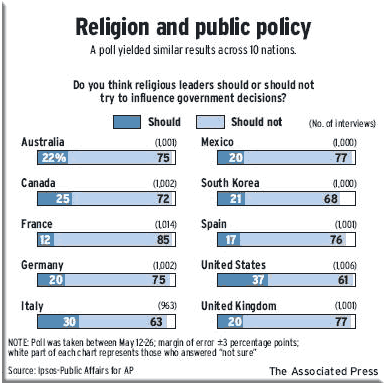
Roman Catholicism Even though it was not the first to arrive in the colonies, Roman Catholicism ranks as the largest Christian tradition in the U.S. with 25.6 million members, or 23 percent of the population. Arriving with the Spanish in what is now Florida in 1513, and in the southwest and on the Pacific coast when Junípero Serra began to build missions in California, they received additional members when a group of colonists settled in Maryland in 1634. Roman Catholics had at one time held tightly to their cultural roots, but later joined the rest of American society. The American church has continued its allegiance to the pope, even though many of its members disagree with him on such issues as birth control, abortion, and women in the priesthood.
Anglicanism The Church of England (later the Episcopal Church in the U.S.) was first planted on American soil at the ill-fated Roanoke colony in Virginia, when their first services were held on August 13, 1687. Since that landing, they grew and experienced numerous schisms, especially in the 1970s when changes in their attitudes towards sexuality, women’s admission to the priesthood, and their Book of Common Prayer, aroused controversy. Their worship services are similar in some ways to those of Roman Catholicism, and their clergy orders are the same: bishops, priests, and deacons. They espouse an inclusive policy toward membership.
Eastern Orthodoxy. Orthodoxy in America consists of more than a dozen church bodies whose national origin is reflected by their names, such as the Greek Orthodox Archdiocese, Romanian Orthodox Episcopate of America, and the Russian Orthodox Church Outside Russia. Eastern Orthodox beliefs are based on holy tradition, or doctrines from early Christianity, and the Bible. The decrees of church councils and the writings of early church fathers establish the authority of church beliefs. Their clergy consist of bishops, priests, and deacons. Their worship services are the most elaborate of all Christian traditions.
The rise and fall of utopian communities Utopian communities were established in America as places where adherents could achieve a perfect religious, political and social system. The first community was established by a group of Dutch Mennonites in 1663 near what is now Lewes, Delaware. Between 1663 and the American Revolution, approximately 20 communities were established. Some communal living arrangements were established for religious purposes, and often to withdraw from society. The great Harmonist Society, Christians who came from Germany during the late 1700s and 1800s, fled religious persecution, then flourished in Pennsylvania and Indiana. Other such utopian communities were established by the Amish and the Shakers.
Throughout its history, the U.S. has been fertile ground for such communal living arrangements, and provided an alternative to the mainstream culture, while still reflecting some of that culture’s fundamental values. By far, the most successful in U.S. history has been the Mormons, whose leader, Joseph Smith, established Mormon communities in Ohio, Missouri, and Illinois. He produced the Book of Mormon and other religious texts, established missionary work around the world, and participated in temple construction, among other things in his brief 39 years.
During the 1960s and 70s, those seeking self-fulfillment and personal growth joined utopian communities, many with Eastern religious masters. The majority of such communities provided an alternative lifestyle that exemplified some of the best attributes that America's original forefathers sought to provide. While most are benign, some utopian-styled communities, such as Branch Davidians in Waco, Texas; Charles Manson’s creation of “Helter Skelter;” and the Jim Jones ill-fated settlement in Jonestown, Guyana, inflicted a disastrous impact on its members.
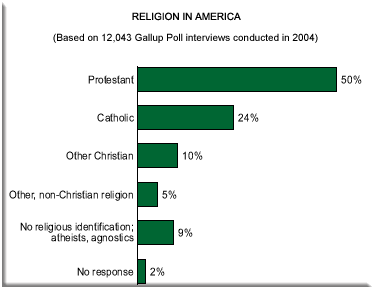
Ever-changing tide of 20th-century religious followings
As the fragmentation of Christian denominations accelerated, persons living in the 20th century experienced the ebb and flow of religious conservatism and liberalism. While technology raced to the moon and beyond, the following major events occurred during that fast-paced era:
Fundamentalism. The rise of fundamentalism occurred in reaction to liberal and progressive views of Americans in the mid-19th century, biblical higher criticism, and the influx of non-Protestant immigrants at the beginning of the last century. Fundamentalists became known for their desire to emphasize a strictly literal interpretation of the Bible, and time-honored cultural patterns. Distinctive roles for men and women, parents and children, clergy and laity, were defined by readings from the Bible.
Most famously known for their stand against Charles Darwin’s theory of natural selection taught in public schools, the Fundamentalist movement also takes credit for birthing the Christian Right in Jerry Falwell’s Moral Majority, the rise of Pentecostalism and the Charismatic movements' style of worship of speaking in tongues.
Israel gains statehood After centuries of persecution, the Jewish people carved out a piece of Palestine on May 14, 1948, that became home. According to historians, President Harry S. Truman offered his country’s recognition of Israel’s statehood for the sake of those who had suffered in the Nazi concentration camps, as well as the American Jewish population. Truman’s decision went against a tide of strong opposition as represented by highly respected Secretary of State George C. Marshall, who feared retaliation from Arab countries. America’s continued support of Israel has faced much criticism and support over the years, the latter notably among American evangelical churches.
Black leaders of the Civil Rights movement Forced to take positions of influence in their local churches during America’s Reconstruction era, the Bible Belt’s black ministers emerged before the public, beginning in the 1950s after Rosa Parks refused to sit at the back of a public transit bus. During the next 20 years, such impassioned leaders as Martin Luther King Jr. and Malcolm X created more change in the public and private sectors than had been seen before. Congregations from African-American Southern churches swelled and created a sustained presence on the American religious scene.
Spiritual hunger of the Sixties and Seventies Young people of the 1960s and 1970s lived during tumultuous times, witnessing the shooting of apresident, fighting the Vietnam War, and the assassinations of such civil rights leaders as Martin Luther King Jr. In their rebellion against the "establishment," those Baby Boomers and somewhat older confederates participated in the Free Speech Movement, experimentation with psychedelic drugs promulgated by former Harvard professor Timothy Leary, and explored such great world religions as Hinduism, Buddhism and Islam. Communes, run by eastern religious teachers, promised personal enlightenment and an escape from the complexity of modern society. Transcendental Meditation (TM) swept through America as young and old attempted to cope with society’s changing times. Beginning in 1965, the Jesus Movement swept the nation, offering inner transformation and a sense of togetherness not found in the drug culture where some 2,000 “hippies” had sought it.
New Age movement Buried in the psychic mysticism of the 1800s, the New Age movement emerged with clairvoyants and psychics giving advice on past and future lives, beginning in 1968. Having once identified with the wave of Eastern spiritual masters, New Agers began to look for answers in spirituality and the occult during the 1970s. Loosely organized in general, but also containing some highly structured groups and some authoritarian ones, the movement’s vision was one of universal transformation. The movement saw itself as part of a New Age with God as the universal bonding agent for all persons. Many different methods for a personal transformation weakened the efficacy of the movement as a whole, and by the 1980s, the movement had peaked. Hopes of imminent change in the social order faded by the 1990s. Those associated with New Age groups provided the basis for a full spiritual life with religious study and literature, learning experiences, and programs oriented towards spiritual practices and self-discipline. Scientology is the fastest-growing manifestation of the movement.
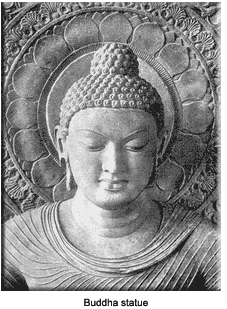
Conclusion
America continues to be a haven for those seeking religious freedom. Some 3,000 religious groups currently exist in the country. The residue from the New Age movement’s focus on a world view and lifestyle continue to benefit the relaxation of social divisions throughout the world in the new millennium. The fragmentation of Christian denominations has slowed, with a renewed interest in cooperation and ecumenism among many of those denominations. No longer considered a melting pot, the largely Protestant population is being exposed to the world’s “great religions” and multiple ethnic groups with Buddhist neighborhoods, Indian business owners, and Muslim colleagues. A growing antipathy toward the latter among some Americans stems from the infamous attack by terrorists on U.S. targets on September 11, 2001.